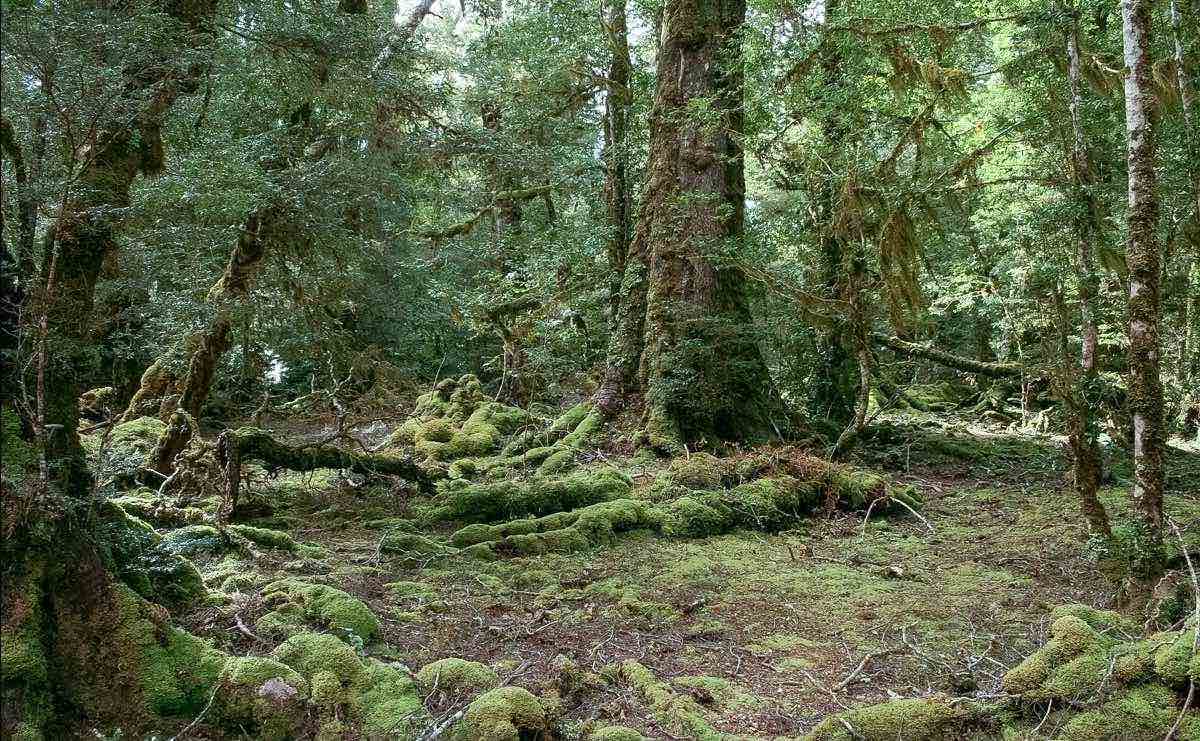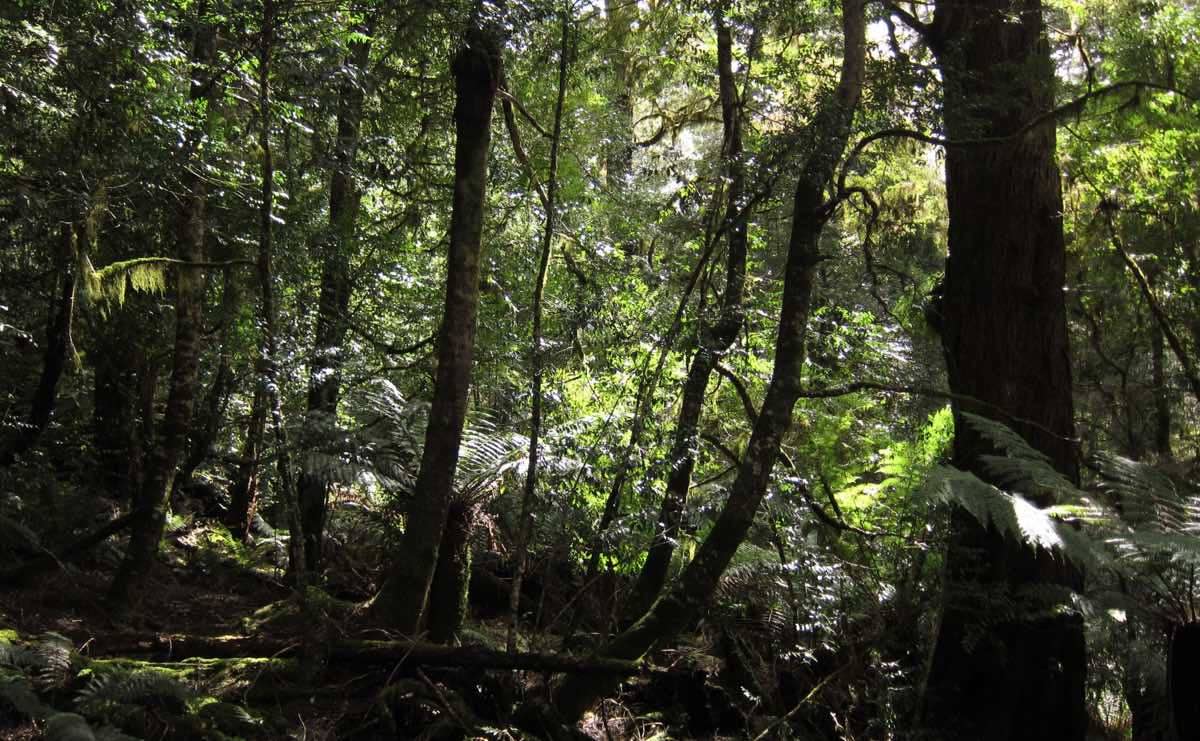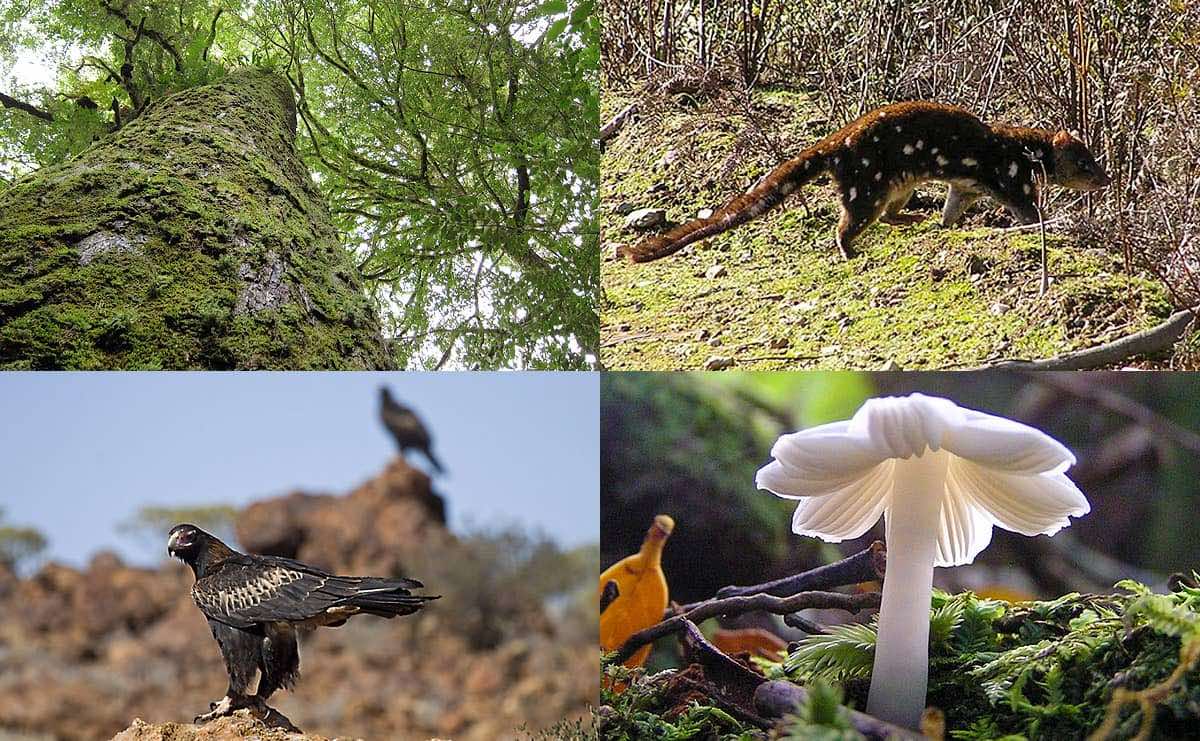Left out in the wilderness, for good.

Forest Lodge is located on Rattler Range, Tasmania © Lesley Nicklason
The 1st Monday of November marks Recreation Day for the majority of Tasmania, a public holiday where the outdoors beckons as the spring air continues to warm up. The day also provides Rainforest Rescue with a chance to share with you some reflections on our southernmost protected area, a remote pocket of cool temperate rainforest left out i the wilderness, known as Forest Lodge, hidden away in the northeast corner of the aforementioned island.
A glance at Rainforest Rescue’s protection portfolio could cast Forest Lodge in an anomalous light: Hundreds of acres of ancient tropical rainforest protected forever, much of which is granted Nature Refuge status, furthering the reach of the Daintree National Park and World Heritage Area. And… a lone square on the map over 3,500km away?
But, for those familiar with the history of Forest Lodge, the reasons for rescuing this property back in 2011 were eerily similar to those affecting the Daintree Rainforest at the time. It’s these parallels that we’ll explore in this edition of our 25th Anniversary series, and a reason why Forest Lodge remains a well-loved (albeit a touch distant) place for Rainforest Rescue.
Ancient habitat under threat
The story of Forest Lodge is one of a turbulent relationship between the forest, rapacious logging companies and the state’s position on the forest as a ‘product’. Tasmania’s deforestation is well documented, with harrowing images capturing the demise of freshly felled forest giants (typically Eucalyptus regnans), many centuries old, lying prostrate on the back of logging trucks.
Opportunities in Nature’s favour are few and far between.
However, in the late 2000s, the state’s rate of deforestation had gained international attention and Rainforest Rescue was one of a number of conservation organisations rapidly intervening alongside the Tasmanian Land Conservancy to protect what natural habitat it could. Tasmanian timber company Gunns was selling an unprecedented amount of already-forested land as it transitioned to plantation forestry from native felling. We had to move fast, and we did.
Through the generosity of supporters like yourself, Rainforest Rescue successfully raised funds to purchase and protect an 80ha site. Many other conservation organisations followed suit as part of the New Leaf project, realising that the alternative future for over 27,000ha of forests and their inhabitants was bleak at best.
In the intervening years, the area now known as Forest Lodge has been left in its natural state, tucked into the adjoining Mount Victoria Regional Reserve, on the eastern slopes of the Rattler Range in what is traditionally known as Meenamatta country.
This is a challenging region to reach, with no road access and very few designated trails. In fact, when discussing the property with Department of Natural Resources and Environment Tasmania, it’s evident that the forest receives few, if any, visitors, as they confirmed: “(We) don’t believe it has been visited since its initial assessment in 2011 as the location is remote and access quite difficult.”
The prospect of well over a decade of undisturbed growth, allowing native species to roam freely through this area is thrilling to us. This is exactly what we hoped for in protecting this property, just as we do in the Daintree – nature allowed to continue without disruption from human industrial gain.

Forest Lodge, Tasmania © Lesley Nicklason

Flora and fauna of Forest Lodge, Tasmania © Tasmanian Land Conservancy, Lesley Nicklason
Images reveal a sublime area of misty quiet, punctuated by the cry of Wedge-tailed Eagles. Forest Lodge’s protected habitat comprises a mix of myrtle dominant cool temperate rainforest and rainforest scrub, with the latter evident on the higher ground and exposed ridges of the Range. These ancient forests are refugia, still growing in-situ from the last ice age, some 18,000 years ago.
The area is known for threatened species such as the endangered Tasmanian Devil and vulnerable Spotted-tailed Quoll, both carnivorous marsupials needing large territories to thrive. Endemic species, including two flightless Stag Beetles (Simson’s and Vanderschoor’s) are able to exist without disturbance in the forest’s damp understorey.
When discussing the ecology of the Rattler Range under protection, NRE’s Conservation Program Officers enthused to us:
“It is absolutely breathtaking. Some of the trees that occur are centuries old and the ground underfoot is so soft with humus it is like walking on a sponge.”
On reflection, the description of ancient forest refugia inhabited by threatened endemic species feels familiar to anyone who also knows the Daintree. We’re sure that you can understand the ongoing need to protect such a precious parcel of natural wilderness.
The future of Forest Lodge
Last year we received positive news regarding the rezoning of land that included Forest Lodge. Conservation Landholders Tasmania has been advocating alongside private landholders for land covenants to provide a layer of safeguarding through zoning. Forest Lodge is now formally zoned as Landscape Conservation, which is a win for nature at long last.
However, Rainforest Rescue remains concerned about the uncertain impact of Future Potential Production Forest (FPPF) in the region. One zoomed-in look at a zoning map surrounding the wilds of Forest Lodge shows an awful lot of ‘pink’ (the zoning for FPPF), fragmenting this habitat haphazardly, with the possibility to pick away at the forest like a fraying tapestry.
Frustratingly, the Tasmanian rainforests are also as prone to the effects of climate change as those in the Daintree, even though both these areas are under increasing protection from development and deforestation. The potential for drying of the forest could alter the ecological balance, so the need for Australia’s transition to energy alternatives is critical.
Perhaps it is an overly romantic notion to consider the idea of true wilderness, where aggressive human impact cannot influence nature’s balance. However, as Forest Lodge and its northern counterparts show, there remains the potential to let nature remain as wild as it can be.
Thanks to supporters like yourself, this vision remains strong after a quarter of a century.
For the rainforests,
The Rainforest Rescue team
Want more good Rainforest news in your life?
Subscribe to our eNews | Follow us on Instagram | Like us on Facebook | Subscribe to our YouTube channel
Help Protect Rainforests Forever
Donate to Protect Rainforests Forever | Become a Rainforest Guardian for as little as $2 a month | Partnership Options


